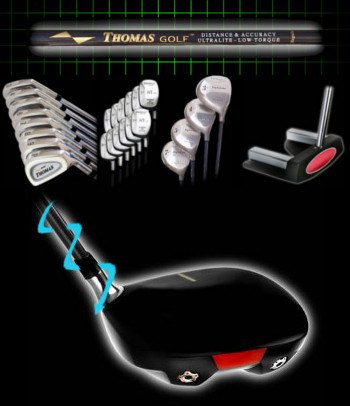- Driver. With little doubt, you should be using a graphite shaft in your driver. This is a distance club, and it is almost certain that a properly-fitted graphite shaft is going to deliver the greatest distance off the tee. You could consider a relatively light steel shaft if you just don’t like the feel of graphite, but that should be considered a last resort. Take some time to track down the best graphite shaft for your swing and then put it into your driver with confidence.
- Fairway woods/hybrids. For most players, these clubs will also be best-served by graphite shafts. Unless you have an incredibly powerful game, there is simply no need to go to steel at this point in the set. You are going to want to be able to hit these clubs high in the air, and you are going to want to maximize distance as well. With graphite, you should be able to reach both of those goals. It is no coincidence that nearly all of the fairway woods and hybrids you will find on the shelves of your local golf shop have graphite shafts pre-installed. This is the right choice for nearly every player, and you almost certainly fall into that category as well.
- Long irons. This is where it starts to get tricky. If you carry long irons (not all players do), you will need to think carefully about whether they should be fitted with graphite or steel. Going with graphite is going to help you get the ball up off the ground, which is often a challenge with long irons. On the other hand, steel should provide you with great feel and better consistency. Your final decision should come down to two things – skill level, and swing speed. A powerful player with a low handicap can probably handle steel-shafted long irons without much of a problem. On the other hand, a shorter hitter who isn’t quite as skilled will probably see gains from using graphite in this part of the bag.
- Short irons. By this point in the set, most golfers should be using steel shafts. With that said, not everyone is going to be comfortable with steel shafts, even in the short clubs, so don’t feel compelled to go this direction. If you are getting good performance from your graphite-shafted short irons, you should continue to use them, of course. The problem experienced by many golfers when using graphite in the short irons is excessive spin. However, players with a low swing speed and little hand action through the ball usually don’t have a problem with too much spin. The only way to make this decision properly is to test out the options for yourself. Do you like your spin rate with graphite shafts, or does it seem more playable with steel? Controlling your spin is a key skill with short irons, so pay attention to this point above all else.
- Putter. We probably don’t even need to include this club on the list, but you should be using a steel shaft in your putter. In fact, it would be hard to even find a putter built with a graphite shaft. Steel is heavier than graphite, and the extra feel from that added weight is a great thing for your game on the greens. Unless you have some very specific reason for considering graphite, just use steel and move on.

Putting Together Set Clubs Right Shaft Choices
If you first outline the argument between steel and graphite shafts, it is time to talk about how you can assemble your set successfully. We can’t tell you exactly which of your clubs should have graphite and which should have steel, since you need to think about your game carefully when making these decisions. We can, however, provide you with a general outline for making these choices. When you combine the advice below with your own preferences and needs, it should become rather easy to settle on a final decision.
Below is a breakdown of some of the various clubs in your bag, along with advice on whether you should use graphite or steel.
The outline above should give you a place to start when assembling your set. Assuming you already play golf, you already have a set of clubs with some combination of graphite and steel shafts. Think about the performance of your current clubs, and identify any areas for potential improvement. If you think that some of your clubs could offer more to your game than they are currently delivering, resist the temptation to blame the club head and look to the shaft instead.





